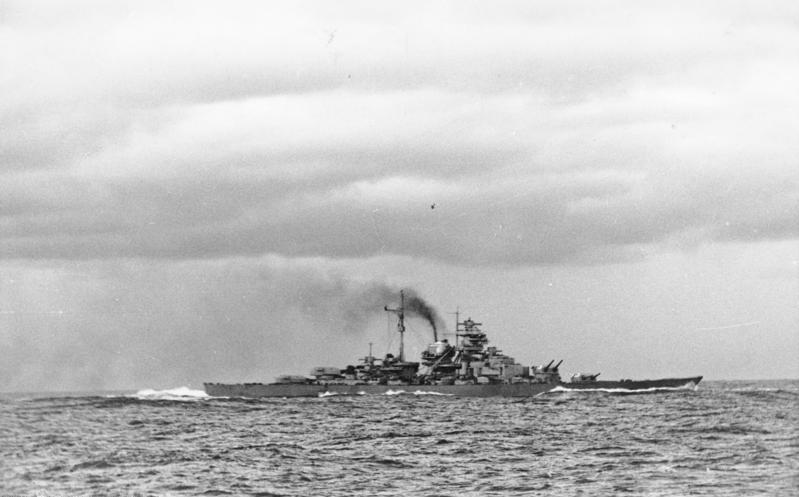May 27th 1941 German Battleship "Bismark" Sunk

Bismark
The Bismarck, Germany’s most powerful battleship, was a formidable weapon in its time. In response to the Bismarck’s threat, nearly the entire British fleet embarked on a naval campaign to prevent its attack on British shipping. Despite the loss of the battleship Hood, the British successfully sank the Bismarck..
The Bismarck, a German battleship, was renowned for its immense power. Displacing a staggering 53,546 tons, it possessed a remarkable top speed exceeding 30 knots. Equipped with four turrets armed with dual 15-inch guns, the Bismarck was a formidable force.
On May 19, 1940, the Bismarck embarked on a transatlantic voyage with the heavy cruiser Prinz Eugen, ostensibly to engage in maritime commerce. However, the British government was privy to the Bismarck’s departure and promptly assembled all available warships to intercept the formidable vessel.
Regrettably, a fueling mishap prevented the Bismarck from acquiring a full complement of fuel, which would have had catastrophic consequences. On the evening of May 23, 1941, the patrolling British cruiser Suffolk intercepted the Bismarck and promptly reported its position to the relevant authorities.
The first British vessels to engage the Bismarck were the battleships Hood and Prince of Wales. The Hood, a WWI battleship that had epitomized British power during the interwar period, had not undergone any modernization. Conversely, the Prince of Wales, a newly commissioned King George Class battleship, was still in the process of being completed and had its yard workers onboard.
The two forces converged upon each other, and on the morning of May 24th, when the distance between them had narrowed to less than 14 miles, the British force, commanded by Rear Admiral Holland, opened fire. The two forces soon found themselves on parallel courses, enabling them to fully unleash their guns.
The eighth shell of the fifth salvo from the Bismarck struck the anti-aircraft magazine of the Hood, causing an explosion that irreparably damaged the vessel. Within moments, the Hood sank, taking with it 1,400 men, including Admiral Holland. The German battleships Bismarck and Prinz Eugen subsequently focused their attention on the Prince of Wales. Within a short span of moments, the bridge of the Prince of Wales was destroyed, and the ship sustained significant damage. At that precise instant, the German captain, Luetjens, inexplicably severed contact with the British forces.
The Bismarck, however, had sustained substantial damage. It had taken on water and contaminated a portion of its fuel supply, leaving it severely short of fuel. Consequently, the Bismarck set course for Brest, successfully eliminating its trailing British forces.
Despite breaking radio silence and informing the German naval command of its destination, the Bismarck inadvertently compromised its position by revealing its expected course to the British fleet. This revelation allowed the British to concentrate their efforts on the Bismarck’s anticipated trajectory.
On the morning of May 26th at 3 AM, a British patrol plane detected the Bismarck. With its location established, the British fleet commenced its convergence. The sole viable option for halting the Bismarck in time was an air attack.
Following a misguided attack on the British Sheffield, the British carrier Ark Royal launched 15 Swordfish torpedoes. Two torpedoes struck the Bismarck’s stern, causing the rudder to jam. The Bismarck’s fate was sealed, as it became incapable of steering. Consequently, the majority of the British fleet now approached. The lead British vessel was the Rodney, equipped with nine 16-inch guns. The King George and two heavy cruisers were also present in the fleet.
The British fleet commenced a bombardment of the Bismarck. The Rodney alone fired 380 16-inch shells, while the King George employed 339 14-inch guns. Over 2,000 additional shells were collectively fired. Ultimately, after additional torpedoes were directed at the Bismarck at close range, the Bismarck sank at 10:46 AM on the morning of May 27th.
 >
>